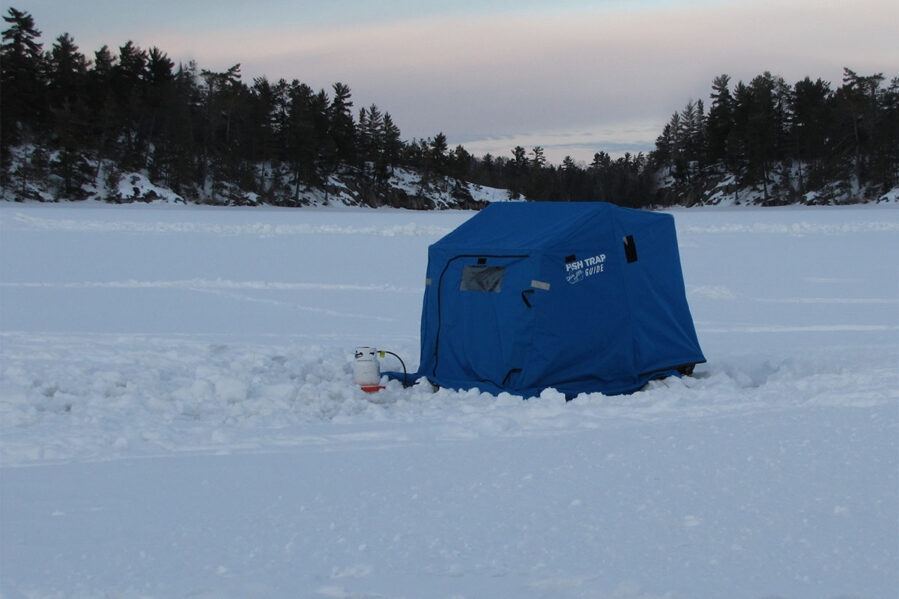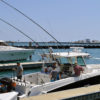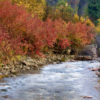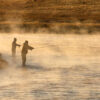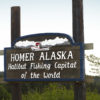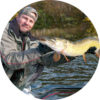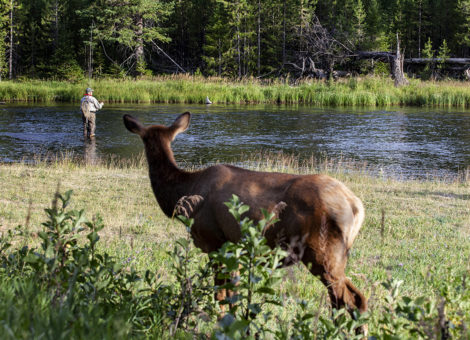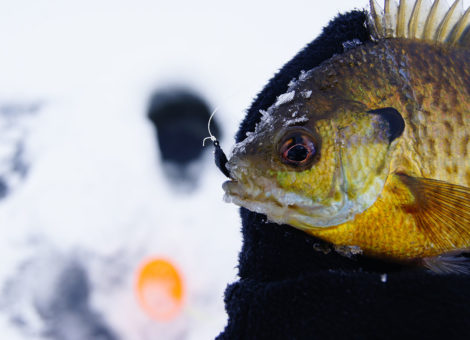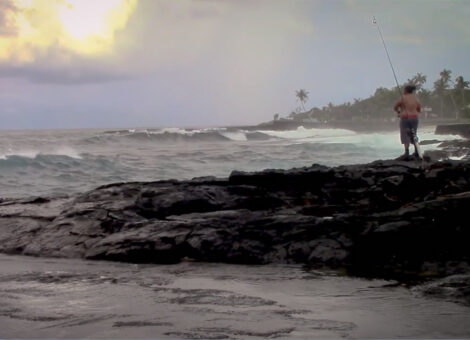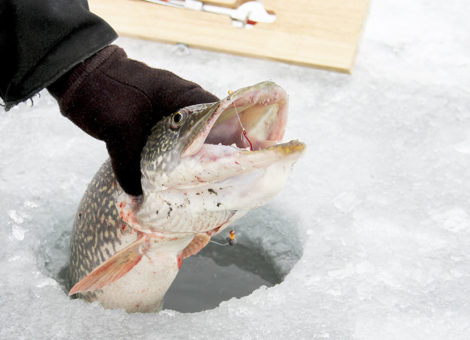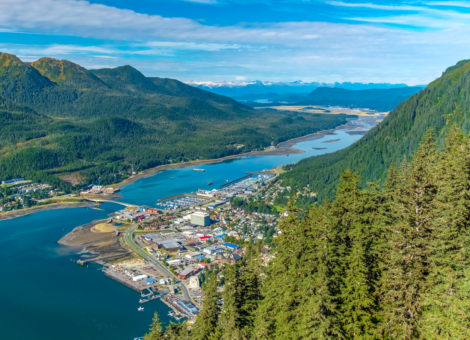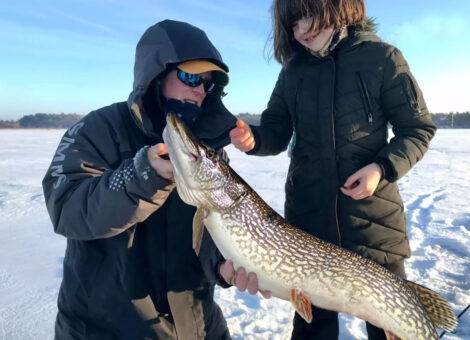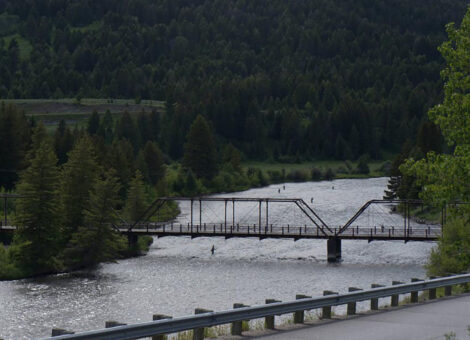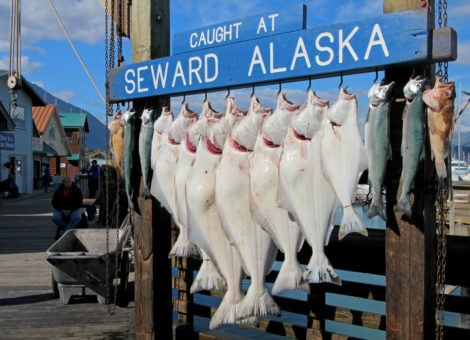You can’t have a conversation about ice fishing without starting with Minnesota—the land of ten thousand lakes. But during the winter, Minnesota transforms into the land of ten thousand ice fishing lakes.
Winter hits Minnesota sooner and leaves later than the rest of the nation, allowing for thick layers of ice and one of the longest ice fishing seasons anywhere in the U.S. Ice fishing gets underway in late November early December and continues well into March sometimes April.
Notwithstanding a long season, with so many frozen lakes to choose from, it would take a lifetime to find and fish all the best ice fishing spots in Minnesota. That’s were we come in. The following guide provides a curated list of the 30 best ice fishing lakes in Minnesota compiled from fishing forums, online reviews, and first hand experience. (I’ve actually fished several of these lakes.)
The following map provides the coordinates for all 30 best fishing lake in Minnesota plus a few honorable mentions. In many cases, lakes inconnected with the lakes marked in the following map will also offer similar hardwater ices fishing species and opportunities. This map is designed to help you plan your next Minnesota ice fishing trip.
| Lake name | Why it's among the best |
|---|---|
| Lake of the Woods | Largest fresh water lake in the U.S. with trophy size Walleye, Sauger and Northern Pike. From time to time you'll hook perch, crappie and whitefish. Ice fishing reaches it's peak in January. |
| Upper Red Lake | Is the largest inland lake in Minnesota. Freezes over early. Popular lakes for early season ice anglers. Offers a variey of services and amenties including equipment rentals, lodges and ices fishing guides. |
| Mille Lacs Lake | Known for superb walleye, pike and panfish fishing. Season runs from December to April. Various fishing techniques including single line, spearing and darkhouse fishing are popular on Mille Lacs Lake. |
| Lake Minnetonka | Lake Minnetonka offers the annual ''Take A Kid Ice Fishing Weekend'' where adults can fish free as long as they bring their kids. Anglers will find fully equipped modern amenties including gear rentals, lodging and guides. |
| Lake Winnibigoshish | Offers some of the best fishing in the Upper Midwest for jumbo perch. Walleye and pike fishing is also excellent. Offers 6 fish walleye limits. Centrally located to other top fishing lakes that are near by. |
| Gull Lake | Offers an abundance of walleye, northern pike bass, trout and panfish. One of most reliable hardwater fisheries. Gull Lake offers resources for fishing gear, lodging, ice house rentals, and fishing guides. |
| Boulder Lake Reservoir | Located closet to Duluth. Provides ample public access and is a favorite ice fishery among locals. Walleye are abundant. Fishing for northern pike, perch, crappie and other panfish is strong. |
| Fish Lake | Offers some of the best hardwater fishing for walleye and panfish. Panfish are above average size. Pike and bass are also popular catches. Freeze over happens before December in most years. |
| Caribou Lake | Not as popular as other top fishing lakes, but offers low fishing pressure. The lakes unique shape and layout provide for different fishing experience. Anglers come here for the scenery and solitude. |
| St Louis Bay (Lake Superior) | Within walking distance of Duluth. Offers a large variety of fishing opportunities from walleye to pike to panfish. Fish are average size but abundant most years. |
| Leech Lake | Large lake with endless fishing spots and opportunities for everything from trophy pike to jumbo perch and walleye. Home of the annual International Eelpout Festival with fish contests and prizes. |
| Lake Vermilion | Excellent perch, crappie, bluegill and walleye fishing. Best know for abundant populations of walleye. You'll find trophy bass, pike, muskie perch and walleye. Offers over 360 islands to fish. |
| Lake Phalen | Offers good hardwater fishing with low fishing pressure most of the time. Pike and largemouth bass are abundant and large. Provides easy access. Fish for pike, bass, walleye, panfish and sunfish. |
| Lake Pepin | Offers excellent ice fishing near incredible amenties. Spend the day fishing and the evening shopping in town or chowing down at some incredible eateries. If you're looking for fishing with comfort, this is the lake. |
| Lake Bemidji | Popular destination for walleye, perch, bass, and crappie. Draws in anglers from across the nation. Many anglers come to experience the tourist city of Bemidji while fishing. Has a cozy village feel. |
| Rainy Lake | Known for superb fishing for lunker walleye, pike and panfish. Offers an extended ice fishing season through the end of April beginning of May. Fishing gear, ice house and snowmobile rentals are available. |
| Zippel Bay | Great destination for hooking lunker walleye, northern pike and sauger. Offers reliable hardwater fishing throughout the winter season. Offers very comfortable accomodations and cabins right on the bay. |
| Oak Lake | Is a great stopover location for ice fishing on the way to Minnesota's northern fishing grounds. A variety of lodging facilities are available. Abundance of walleye, nothern pike, perch and panfish. |
| Lake Elmo | Excellent perch and pike fishing with the opportunity to land tiger muskie, largemouth bass, trout, crappie and panfish. Very popular designation given its proximity to St Paul Minnesota. |
| Big Stone Lake | Known for superb early ice fishing. Great water clarity which allows for some fun times ice fishing by site. Abundant populations of perch, bluegill and panfish. You'll also find walleye, pike, bass and crappie. |
| Lake Kabetogama | Lake Kabetogama is located in the Voyageurs National Park. It offers excellent fishing with low fishing pressure. It provide a unique fishing experience that is almost spiritual in nature. |
Lake of the Woods
Lake of the Woods is the largest freshwater lake in the United States and first on our list of best ice fishing lakes in Minnesota. Ice fishing on Lake of the Woods gets started by late November early December and is in full swing by mid-December. Anxious anglers can be on the ice as early as the end of November and diehards can fish through late March.
Lake of the Woods offers ice fishing for walleye, lake trout, sauger, crappie, tullibee, sturgeon, eelpout and a variety of panfish. You can even snag a giant pike or muskie once in a while if you’re lucky. If you come across a muskie while ice fishing, release it right away. Fishing for muskie is prohibited from December through May.
While you’ll encounter a variety of fish on Lake of the Woods, the number one target by most angers is Walleye. Why are walleye so popular? They’re easy to catch, they put up a great fight, they get big and… well… they’re just an all around awesome fish! Average walleye measure between 15 and 20 inches. But if you fish long enough, you’ll come across a giant 25 plus incher every once in a while.
When fishing for walleye you’re likely to hook a sauger or two. Where there’s walleye, there’s going to be sauger too. Sauger are similar to walleye but have a black dot on their fin not found on walleye. For best walleye and sauger fishing, try South Shore Kenora, Northwest Angle, Traverse Bay, and Clearwater Bay.
You’ll find a lot of lakes throughout Minnesota that offer great ice fishing… so why is Lake of the Woods ranked at the top of the list? The overall experience. Anglers have access to more than 50 resorts, hotels, lodges, cabins, and even sleeper fish houses that keep you fishing 24/7—making Lake of the Woods a fishing experience like no other.
Upper Red Lake
When it comes to ice fishing, it doesn’t get much better than Upper Red Lake. Not only is Upper Red the largest lake in Minnesota, it’s also the state’s premier winter fishery. It’s known for offering phenomenal walleye fishing. Walleye are abundant and—even better—fairly easy to catch with the right presentation. Average walleye catches are between 15″ and 20″, with larger catches in the 20″ plus range.
Crappie, pike and perch are also common catches, though most are caught incidentally by anglers targeting walleye. If you do reel in a perch it’s likely to be a large one. Average perch are in the 1 pound range, and lunkers of 1.5 pounds are not uncommon. Northern pike are found throughout Upper Red and they’re typically large. Catches of 40+ inches are common.
Upper Red is abnormally large and with a maximum depth of 15 feet, it’s abnormally shallow. It’s shallow depth allows it to freeze over early, and quickly, making it the most popular first-of-the-season ice fishing destination for anglers anxious to wet their line. It’s not uncommon for ice fishing to hit full swing by mid-November on good years.
The lake is so big it can be a little daunting to know where to start. There are roaming schools of fish through the lake, and finding them can be hit or miss. Start by fishing the mid-lake structures where large pods of fish often hold up. A few habitats to target include pressure ridges, humps and anywhere you can find clear water. Drill some holes, drop some lines, and move around. Once you hit your mark, set up camp, drill more holes and drop your lines again.
If all else fails, get high tech. This is one of the few lakes where I highly recommend using a fish finder. It’s a great device for detecting fish under the ice, mapping lake topography, and finding structure. On Upper Red Lake, a finder will greatly increase your productivity.
Next to Lake of the Woods, ice fishing on Upper Red Lake is about as good as it gets.
Mille Lacs Lake
At just over 132,000 acres and 207 square miles Mille Lacs Lake is the second-largest lake in Minnesota. Mille Lacs Lake, locally referred to as the “Walleye Factory”, is a phenomenal walleye fishery, but it also offers opportunities to catch several other species through the ice including northern pike, muskies, jumbo yellow perch, and tullibee (cisco).
If you’ve come for walleye, your best bet is to stick to the shallows. Most walleye are caught in 10 to 15 feet of water. You don’t have to stray far from shore to start reeling in some biggies. Jig heads tipped waxworms are like candy and will catch you everything from giant walleye to jumbo perch. You’ll find walleye everywhere.
Early season on Mille Lacs Lake extends from December through April. Best fishing during early season (late November through end of December) is on the larger bays including Isle, Cove, Vineland, Sunset, Garrison and Wigwam. During later season (January to April) fish around the islands. A few hotspots include Big Point, Indian Point, Hennepin Island, Shah-Bash-Kung Point and Doe Island.
If you’re after giant pike or muskies, Mille Lacs Lake is a great place to drop your line through the ice. Pike here are active even during the coldest months. And you won’t find a fishery in Minnesota where the muskies get any bigger. The state catch-and-release record, a 58.25-inch monster muskie weighing in at 55 pounds 14 ounces was pulled from Mille Lacs Lake November 2021. For best pike fishing hit the southern bays and fish along the northwest shoreline.
On any given day during peak season, you’re likely to see as many as 4,000 ice houses peppering the frozen landscape. Pressure here is high, but the fishing is good. Like many of Minnesota’s more popular hardwater fisheries, you can find just about anything you need to make your fishing experience comfortable and successful. Ice sleeper rentals, lodges, fishing equipment. It’s all available on Mille Lacs Lake.
Lake Minnetonka
Even if you’ve never been to Minnesota, chances are you’ve heard of Lake Minnetonka. It’s located just outside of Minneapolis and is comprised of 23 bays and a series of interconnected lakes. It’s the ninth largest lake in Minnesota and makes our list at No. 4 for best ice fishing lakes.
What makes Lake Minnetonka so special? Well, for starters location. It’s located just 16 miles west-southwest of Minneapolis. It also offers a diversity of ice fishing opportunities and adventures. You could literally spend a lifetime fishing Lake Minnetonka and discover a new hotspot every time you drill a hole. If you’re visiting for the first time, the following are few spots that come recommended by local anglers.
- Black Lake
- Carson’s Bay
- Cross Lake
- Emerald Lake
- Maxwell Bay
- North Arm Bay
- Saint Albans Bay
- Seton Lake
- Seaton Channel
- Spring Park
I’ve only fished Lake Minnetonka once during the winter and spent most of the day on on Seton Lake—a bay just northwest of Lake Minntonka proper. It’s just a 10 minute drive from Lake Minnetonka and located just off Shoreline Drive. If panfish are your thing, this is the spot to be. Drop an ice jig or circle head jig tipped with a waxworm, or small soft plastic, and you’ll be pulling bluegill and crappie through the ice all day.
You’ll find multiple species of gamefish throughout Lake Minnetonka. Panfish are most abundant, but there are a fair number of bass, bullhead, bowfin, sunfish, muskellunge, and northern pike. If you’re interested in snagging a muskellunge or pike, a jig tipped with a minnow or shiner is a great option.
Like most of the larger lakes in Minnesota, Lake Minnetonka offers a variety of amenities—lodging, restaurants, guides, equipment rentals—to make your ice fishing easy, convenient and comfortable. You can even rent one of Minnetonka’s famous fish houses and spend your entire trip right on the lake.
Lake Winnibigoshish
Lake Winnibigoshish, locally referred to as Lake “Winnie”, is located in the Chippewa National Forest in north central Minnesota. Lake Winnie is a premier hardwater fishery known for its jumbo perch and walleye. Anglers can also expect to catch northern pike, muskellunge, walleye, bluegill and crappie.
Perch in Lake Winnie are aggressive feeders and will readily take a jig, spoon, bladebait, waxworm or combination. If you’ve got your eye set on jumbo perch, target areas with structure in about 15 feet of water. Once you find your mark, you can fish the same few holes for hours. If you’re pulling out undersized perch, find a new spot. There are plenty of lunkers in Lake Winnie that you shouldn’t have to settle.
While not as abundant as panfish, Lake Winnibigoshish has its fair share of northern pike and walleye. Average pike weigh in between 5 and 10 pounds, with a few larger specimens tipping the scales at 15 pounds. Your typical walleye catch on Lake Winnie will be around 3 pounds, with a few tipping the scales at 5 to 6 pounds.
A fun technique for ice fishing that’s quite popular on Lake Winnie is darkhouse spearing. It works like this. You rent a darkhouse, cut your hole in the ice, set a decoy, and wait for the fish to come investigate. When a hungry pike approaches to seize the bait, you spear it. The darkhouse must be completely dark, and the water clear. Darkhouse fishing is primarily used for pike.
If by chance you have an off day on Lake Winnie, other good ice fishing lakes near Lake Winnie include Cutfoot Sioux Lake (walleyes, crappies, sunfish) and Portage Lake (crappies, sunfish, walleyes, pike).
Affordable lodges, lake-side cabins and ice house rentals are available.
Gull Lake
With 9,418 acres of frozen lake surface Gull Lake is the largest lake in the Brainerd Lakes region. Here you’ll find plenty of space for everyone. Each February Gull Lake hosts the Brainerd Ice Fishing Extravaganza which draws over 10,000+ anxious hardwater anglers from across the state to wet their line—and freeze their tush. It is held at the Hole In The Day Bay where contestants arrive to over 20,000 pre-drilled fishing holes.
Most of the fish you’ll find in the Brainerd Lakes region you’ll find in Gull Lake. It is well known for it’s superb walleye and northern pike fishing. Walleye are stocked annually and most range between 15 and 20 inches, with some reaching over 5 pounds. Most pike are in the 20-24 inche range, with some topping 40 inches. The lake also has healthy populations of largemouth bass, smallmouth bass, rock bass, muskellunge, perch, crappie and sunfish. Panfish are abundant but on the smaller side.
I consider Gull Lake the lazy man’s fishing destination. All the amenities you could hope for you can find on Gull Lake. There are over 20 resorts and lodges providing comfy accomodations, along with ice house and equipment rentals. Its 30 plus miles of shoreline provides multiple public access areas. Peak ice fishing season extends from mid-December through mid-February, tapering off through the end of March.
Boulder Lake Reservoir
While not as popular as some of the larger lakes in the area, Boulder Lake Reservoir is a contender as one of the best ice fishing lakes in Minnesota. This 3,800-acre reservoir located just 12 miles north of Duluth offers ice fishing for walleye, northern pike, crappie, bluegill, panfish, burbot and yellow perch—with walleye the main attraction.
Walleye are abundant in the 15 to 18 range, with a few lunkers reaching over 20 inches. You’ll find walleye along weed edges and foraging in the flats. Panfish are abundant throughout the lake, but more concentrated at mid-range depths near cover and vegetation. Average perch and crappie are between 10 and 12 inches. You’ll find some pike, but most are under two feet.
Two of the most popular ice fishing spots on Boulder Lake are the south shore near Silver Fox Resort and Boulder Dam public access. If you’re set on reeling in a pike or two, I recommend fishing around the island located due north of Silver Fox Resort. Can’t miss it.
Fish Lake
As it’s name suggests, Fish Lake is known for quality fishing—and this includes being one of the top spots in Northeastern Minnesota for ice fishing. This 2,900 acre lake is located just a stone throw from Duluth and is local hot spot for all types of outdoor recreation including ice fishing. The majority of the shoreline is undeveloped. The lake is accessible via the north shore at Hi-Banks Resort.
Ice fishing species include many of the likely suspects including largemouth bass, northern pike, a variety of panfish (crappie, bluegill, yellow perch), sunfish, the occassional burbot and the local favorite, walleye. If you’ll looking to land a walleye, some of the best fishing is found just off the north shore in the narrows and bays near Hi-Banks Resort. You average walleye will be about 5 pounds with a few lunkers weighing in over 10 pounds.
Bass, pike and panfish account for most of the ice fishing activity on Fish Lake. Largemouth bass put up quite fight, if you’re lucky enough to hook one. If you’re targeting pike, you can expect your average catch to be in the 18-22 inch range. Crappie and bluegill are above average, abundant, and the main target of most anglers.
Most fish are caught at depths between 15 to 20 feet. You’ll find some fish hold up in 30+ feet of water during the coldest months but your best bet is to fish a bit shallower. Ice fishing gets underway as soon as the ice forms at the beginning of December.
Caribou Lake
Referred to by locals as one of the top 3 ice fishing lakes in Minnesota, Caribou Lake is sure to please. It is known for its unique shape and layout that provides anglers the opportunity to fish a number of unique formations and pockets.
Common catches include bluegill, crappie, northern pike, smallmouth bass, and yellow perch—but it is primarily a walleye and largemouth bass fishery. Walleye are abundant and average between 18-20 inches, with larger catches possible. Largemouths are typically in the 2 to 3 pound range. Northern pike, a little less common, can push 22 inches and are between 2 and 3 pounds.
Panfish, including crappie, sunfish, bluegill and perch, are abundant but tend to be on the smaller side. Drop in your line using a small ice jig tipped with a waxworm and you’ll be pulling panfish through the ice all day long. The abundance of panfish and easy of fishing makes Caribou Lake a great place to take the kids and family.
Caribou Lake has two access points. One on either side of the lake, on the west and east shores.
St Louis Bay (Lake Superior)
St Louis Bay estuary of Lake Superior is one of the most popular ice fishing spots in Duluth, Minnesota. When the ice freezes over, locals can literally walk with their rod and bait in hand and drop their line in one of the states best hardwater fisheries.
The bay cover over 11,000 acres extending along Minnesota’s Highway 61. If you’re not sure where to drop your line, just follow the crowd. During peak season you’ll find anglers all along the bay drilling holes, dropping their lines, and reeling in fish.
St Louis Bay supports a variety of fish species including bass, walleye, crappie, northern pike, yellow perch, and more. Walleye are abundant, but small. As are most panfish—with the exception of Yellow Perch, which can reach nearly a foot in length and tend to be quite plump. You’ll nab a pike now and again, but they’re not a common catch.
Leech Lake
At 103 acres, with 195 miles of shoreline, Leech Lake is one of Minnesota’s largest bodies of water and sport fisheries. Every winter, thousands of angler set up camp on Lake Leech, drill a hole, drop a line, kick back, relax and wait—hoping to hook a trophy walleye, jumbo perch or fiesty pike.
The most popular fish-for species on Leech is without question the walleye—and for good reason. They’re big and their plentiful. If you know how to fish for walleye, you’re sure to fill your limit without breaking a sweat. The most common techniques for fishing walleye are jigging and dead sticking. A classic round head jig tipped with a small minnow or flathead is a lethal combination that will get a lot of bites. Walleye average between 10 and 20 inches, but can reach up to 30″.
Big perch are abundant on Leech, with jumbos a common occurrence. When anglers aren’t fishing for walleye during the mid-afternoon, they’re usually targeting perch. Fishing small spoon lures tipped with a waxie will get the perch biting in not time. Perch on Lake Leech can reach up to 15″, and sometimes even bigger.
Crappie, northern pike, muskies, bluegill, eelpout (burbot), tullibee, and large- and smallmouth bass are other gamefish species targeted by ice angers. Small spoons, jigs and minnows are effective for catching crappie, which average 8″ to 10″. Want to catch a giant pike? Fish larger dead or live baits such as ciscoes, suckers and shiners. Large spoons and jigs will also get the job done.
Given it’s immensity, if you’ve never fished Leech Lake before it can be a little intimidating. Knowing the lay of the land, and where to drill your holes, will go a long way to ensuring a fun, fruitful ice fishing experience.
Leech has a plethora of large bays, islands, nooks and coves that are absolute hot spots for fishing pike, bass and panfish. If you’re not sure where to get started, I recommend Walker Bay. The bay is large with plenty of space to accomodate many anglers. Walleye, pike, bluegill and crappie are abundant here. Near Walker Bay you’ll also find Sand Point and Shingoobee Bay, which not only offer excellent fishing, but tend to ice over at first freeze.
The larger flats along the lake’s southern shoreline also provide productive fishing. A few hotspots you can try are Pine Point, Stoney Point, Grand Vu flats and Diamond Point. Interested in burbot (freshwater lingcod)? Fish the deeper bays.
Peak ice fishing season on Lake Leech extends from mid-December through the end of March.
Lake Vermilion
Lake Vermilion is a hotspot for ice fishing. Most of the fish you catch during the summer months you can also fish throughouth the winter. Lake Vermilion is best know for walleye and muskie but anglers can target perch, pike, bass, trout, crappie, bluegill, sunfish, bullheads, and tullibee under the ice.
Panfish are abundant and the muskies and pike on Lake Vermilion are trophy size. Muskies in Lake Vermilion can exceed 50″. The lake also has a surprisingly strong population of smallmouth bass. During early ice, you can catch smallmouth bass near the fingers and points using lures that mimic minnows.
Bait preferenece will vary from summer to winter, however, the best year-round baits for fishing Lake Vermilion include minnow baits, live baits (cricks, nightcrawlers, waxworms, shiner minnows), softbaits, jerkbaits, spinnerbaits, spoons, and last—but not least—jigs. When targeting northern pike and muskellunge, remember, the bigger the better. If you want to catch these monsters, you need a big bait.
With 341 miles of shoreline, a surface area of 39,271 acres and 365 islands, Lake Vermilion is big—and that’s putting it mildly. There is absolutely limitless fishing habitat and opportunties for ice anglers. But figuring out where to start on such a massive body of water is challenging. You’re going to find good fishing throughout the lake but some spots hold more charm (and fish) than others.
The east end of Vermilion is known for producing lunkers. If you’re looking to hook a monster pike or muskie, this is a good place to start. It’s also the windy, cold end of the lake, so come bundled and prepared. The west end is smaller and provides less structure than the east end, but offers great fishing without the wind chill.
Lake Phalen
Located in the Twin Cities area on the outskirts of St Paul, Lake Phalen is one of the top hardwater fisheries in Minnesota. It’s the ideal ice fishing trip for the urban angler who want’s to spend the day on the ice fishing but get back home by dinner time.
A large variety of gamefish live in Lake Phalen. Walleye, northern pike, tiger muskellunge, bass, crappie, bluegill, perch and sunfish—you’ll find them all. If you like monster bluegill, it doesn’t get any better than Lake Phalen. Bluegill on Lake Phalen are abundant and large.
During the winter, fishing pressure on Lake Phalen isn’t as high as it is on Minnesota’s northern lakes, primarily because motorized vehicles are prohibited on the ice. You’ll have to drag your gear out yourself, but you’ll avoid the crowds found on other lakes. Lake Phalen can still draw crowds on weekends, so if you want the peace and calm of having an entire section of the lake to yourself visit during a weekday.
The south end of the lake is shallower then the north end. It has a lot of cover and vegetation where fish like to hold up. It’s a good place to drop your line, if you’re just getting started. Be careful fishing the north end. It’s deep (90+ feet) and the ice can be thin.
Lake Pepin
Lake Pepin offers a different kind of fishing experience. It is a naturally occurring lake on the Mississippi River that extends from Red Wing southeast to Wabasha. As a river lake, water in Lake Pepin has a slow but continuous current—even during the winter under the ice.
You’ll find a number of species in Lake Pepin include panfish, sauger, perch and pike, but it is best known for its walleye. There are a lot of walleye here. The challenge is finding them. You many need to try a number of spots, and drill a couple holes, before you hit your mark.
A few spots I’ve heard are good to fish include Maiden Rock located just off Great River Rd (Hwy35) on the Wisconsin side of the lake. Another great area is near Frontenac just off Frontenac Beach. Both these area have plenty of fish and freeze early. Walleye fishing tends to be best north of Frontenac.
The ice on Lake Pepin can be dangerously thin in some places. Avoid points that jut out into the water and where creeks empty into the lake. Be especially careful when driving a vehicle on the ice. Cars have fallen through the ice on Lake Pepin.
Lake Bemidji
Lake Bemidji is 6420 acres and located in northcentral Minnesota. Given it northernly location, it offers a longer ice fishing season than most lakes in Minnesota. Lake Bemidji typically freezes over the end of November and provides excellent ice fishing through the end of April. The most common catches on Lake Bemidji include perch, walleye, northern pike and muskellunge. Panfish—including bluegill and crappie—sunfish, burbot, trout, tullibee, bullhead, redhorse, and largemouth bass are also abundant.
If by chance you have an off day on Bemidji (not likely), there over 400 other productive fishing lakes within a 25-mile radius. Twelve lakes in the immediate proximity of Lake Bemidji, including Lake Bemidji, known as the “Deadly Dozen”, offer some of the best ice fishing in northern Minnesota. They’re referred to as the deadly dozen because they consistently produce. The “Deadly Dozen” include:
- Lake Andrusia
- Lake Irving
- Kitchi Lake
- Big Wolf Lake
- Cass Lake
- Big Turtle Lake
- Turtle River
- Big Lake
- Lake Plantangenet
- Lake Winnibigoshish
- Three Island Lake
- Lake Bemidji
Most of these lakes include abundant panfish, bass and pike, along with walleye, sunfish and catfish. They’re mostly shallow lakes and freeze over early in the season. Some years produce better than others, but all in all they’re reliabe—and they’re always fun to fish.
During the winter, Lake Bemidji is converted into a snowy fishing village. Fishing houses and shelters dot the ice. Equipment and fish houses are available to rent.
Rainy Lake
When ice conditions are good, ice fishing on Rainy Lake is great. Rainy Lake is one of the premier ice fishing destinations for ice anglers from Minnesota and throughout the Midwest. During peak fishing season you’ll find hundreds of ice fishing shelters speckled across the lake setup next to makeshift stoves and fishing holes.
Walleye and pike are the target catches in Rainy Lake, but you’ll also find abundant smallmouth bass, northern pike, perch, panfish and crappies. The morning and evening hours tend to be most productive, although some anglers report having success throughout the day. The most effective ice fishing technique on Rainy is jigging with live bait. Bright colored jigs and vibrating jigs are the go-to lures for most anglers.
Rainy Lake is accessible by snowmobile or vehicle. You can get just about anywhere on the ice with a snowmobile. You can also access some nice fishing spots on foot. If you’re using a vehicle be careful. For light vehicles use the Sandy Bay ice road. There are also several roads to the east. There is a lot of current under the ice so it’s advisable to follow established tracks. Where there’s moving water the ice is thinner.
Most of Rainy Lake offers good ice fishing. One hotspot I recommend is Black Bay. With a good presentation, and some patience, you should be able to reel in some lunker crappie and decent size pike. Dead smelt under a couple tip-ups is the ideal setup if you have your eye set on northern pike. Red Gut Bay, and the Cliff Narrows area, are known crappie hotbeds.
Rainy is another one of Minnesota’s “Big Lake” resort destination that offers lodging, ice fishing equipment and ice house rentals. Ice fishing gets going here end of November beginning of December and continues through end of April beginning of May.
Zippel Bay
Zippel Bay is considered one the best ice fishing lakes and walleye fisheries in Minnesota. It is located at the southern end of Lake of the Woods where it feeds into the larger lake. In addition to walleye, you’ll find abundant populations of sauger, large northern pike, smallmouth bass, perch and panfish.
Zippel Bay is a hotspot of winter activity. Ice fishing, snowmobiling, snowshoeing, and cross country skiing are the mainstay of cold weather recreation at Zippel Bay and Zipple Bay State Park. Whether you come for the fishing or just the cold weather, you’ll have the time of your life.
Oak Lake
Oak Lake is a popular hardwater fishing destination located in the township of Kerrick in centeral Minnesota. Anglers come here to fish for a few days or stop by on their way to Minnesota’s northern winter fishing grounds. When first discover Oak Lake experience considerable fishing pressure. Today, it’s not as popular among anglers, which why it’s a great place to fish if you’re looking for respite from the crowds.
Oak Lake offers great ice fishing for bass, northern pike, unreal walleye, jumbo perch, crappie, and sunfish. Fishing equipment and lodging facilities are available for rent.
Lake Elmo
Lake Elmo is known for an abundance of Perch and Northern Pike. There are also tiger muskie in Lake Elmo. They’re not as abundant as perch or pike, but they tend to be on the larger side. The state record Tiger Muskie was caught in Lake Elmo (34 pounds). Elmo has healthy populations of largemouth bass, bluegill (smaller), crappie (larger), trout (larger), and tullibee.
It is a popular hardwater fishing destination located just outside of Minneapolis. Lake Elmo has an abundance of fish and is easily accessible, but fishing at time can be challenging. You may need to move around a bit to find where pods of pike and perch are hold up.
Probably the best thing about Lake Elmo in my opinion is its proximity to a major metropolitan area and Lake Elmo Regional Park Reserve. You can spend the morning fishing the lake, afternoon snowmobiling or snowshoeing, and the evening in the city enjoying the warms of a nice restaurant and hotel.
During the winter the easiest way to access Lake Elmo is through the County park.
Big Stone Lake
Historically a drive by lake ignored by anglers heading west, today Big Stone Lake is one of the top hardwater fishing holes in Minnesota for Perch and Bluegill. You’ll find a variety of fish here, including bass, walleye, crappie, and northern pike, but most anglers come to fish the record populations of trophy size perch and bluegill. Fishing is best during the early morning and evening.
The perch and bluegill in Big Stone Lake aren’t huge, but they’re big. Average jumbo perch are in the 9″-11″ range, which a few jumbos topping 13″. You’ll find healthy size bluegill specimens as well. High water clarity provides for great sight fishing, especially at the beginning of the ice fishing season in December. During the early ice perch are aggressive feeders. To target larger perch, use spoons tipped with minnow heads of spikes. Use whole minnow to target jumbo size perch.
During the coldest part of the season, from January to February, downsize baits from minnows and spikes to smaller bugs or jigs tipped with waxworms. During late ice, in March, fish become more aggressive and fishing really picks up again. Both jigs and spoons will get the fish biting.
Lake Kabetogama
Last on my list of best ice fishing destinations in Minnesota is Lake Kabetoga. Located just south of Rainy Lake near the Canadian border in Voyageurs National Park, Lake Kabetogama provides a unique ice fishing experience not found on other lakes. Kabetogama is ghostly quiet with relatively low fishing pressure, has shorelines lined with rugged majestic pines, and offers excellent ice fishing opportunities.
What makes Lake Kabetogama so unique, and puts it on my list of best ice fishing locations, is its remoteness. Because it’s located in a national park it’s much less developed than other lakes of its size. It’s remote, but accessible. Getting to Lake Kabetogama is a little out of the way, but very doable. And if you want to experience great fishing, while taking in some of the most prestine wilderness landscape in the country, Lake Kabetogama is worth the trip.
At Lake Kabetogama you’ll find a few lodges, equipment rentals, and fish houses for rent, but you won’t find all the amenities offered at more popular ice fishing destinations. The big plus is the the lake is not overdeveloped. You will, however, find peace, quite and a lot of fish. The most commonly caught fish include Walleye, Sauger, Northern Pike, Perch, Tulibee


